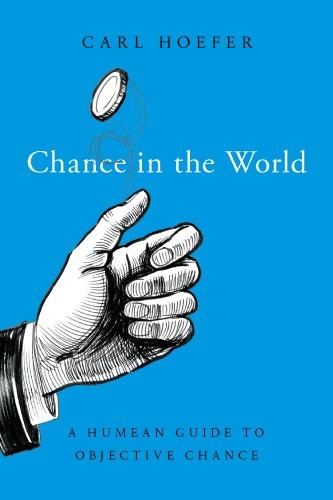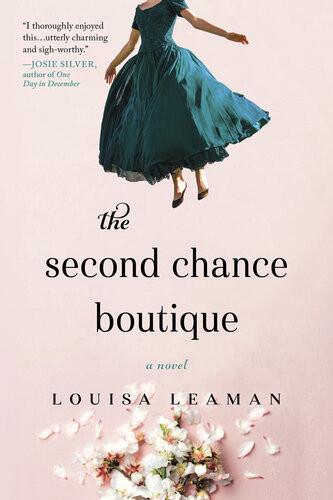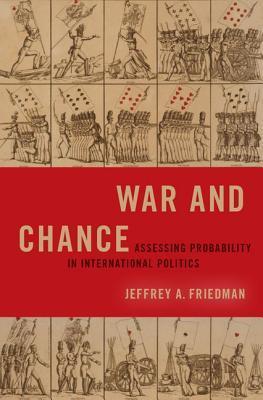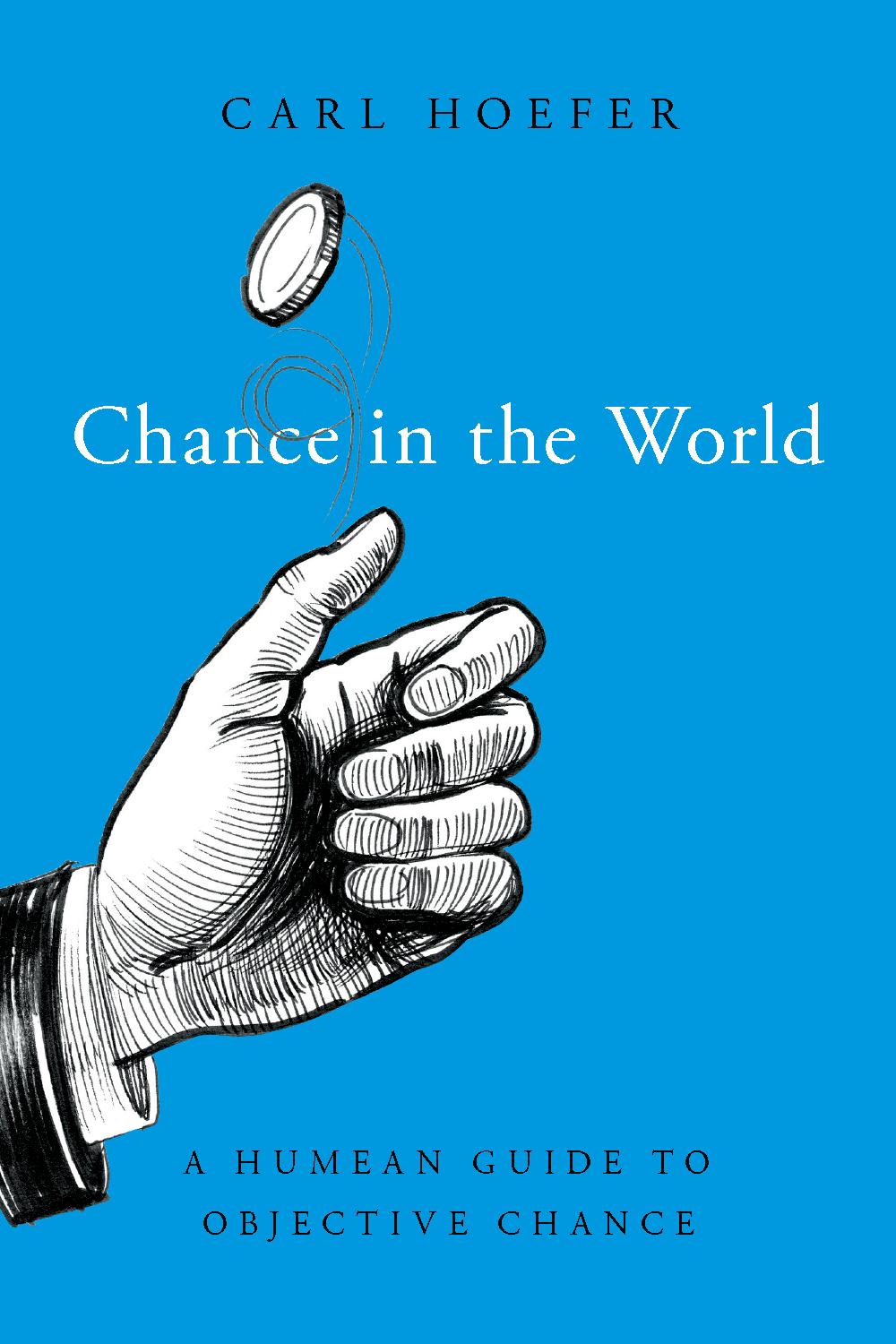Analytic Table of Contents
Chapter 1: Metaphysical Preliminaries
The chapter starts with a rough first approximation to the theory of chance to be developed. Objective chance facts are grounded on the existence of patterns in the events found in our world’s Humean Mosaic; and the chance facts so grounded will later be seen to be apt for guiding rational credences (subjective probabilities) in the way captured by the Principal Principle (PP), which in one form can be written:
PPCrA XE x :, | () =
where X is the proposition that the objective chance of A is x, and E is background knowledge.
After laying out the basic idea, the rest of the chapter is dedicated to exploring two issues. First, what is this Humean Mosaic (HM)? What does it contain, and what does it leave out? What understanding of time is presupposed? What sorts of properties and things make up the events in the HM? Unlike Lewis and other Humeans, I do not insist that the HM have only “occurrent properties” in it; I am happy to allow ordinary dispositions, causal relations and/or causal powers, and suchlike things—as long as they are not probabilistic. I also adopt an agnostic or ecumenical attitude concerning the laws of nature: they may be Humean facts supervening on the HM, or primitives, or even necessary truths of some sort—again, as long as they are not probabilistic.
Second, the rest of the chapter gives an extended discussion of the idea of considering objective chance facts to be primitives of some sort, as most propensity views hold, or to be based on primitively
(irreducibly) chancy laws of nature. I develop what I call “the dialectics of primitive chance,” an extended attempt to explore what it could mean to postulate primitive chances or chancy laws. In the course of the dialectics we see that it is by no means clear that any answer can be given to this question of the meaning of primitive chance claims. But we see also that a tacit—and illegitimate—invocation of the PP helps explain why philosophers often think they understand the meaning of primitive chance claims. The invocation of the PP is illegitimate, though, because there is no way to show that a bare primitive posit deserves to guide credence in the way captured by PP. The dialectics lead, then, to the conclusion that we don’t really understand what it could mean to postulate primitive chances or chancy laws. Thus, the chapter prepares the reader to be receptive to an alternative approach to understanding objective chance, one that is explicitly reductive and that eschews reliance on mysterious metaphysical notions.
Chapter 2: From Lewisian Chance to Humean Chance
In this chapter I introduce David Lewis’ highly influential and muchdiscussed views on objective chance. First I look at his 1980 treatment of objective chance and the Principal Principle, and criticize some of the decisions Lewis made in that paper, especially concerning time and the notion of “admissibility.” I then go on to present his final, 1994 theory of objective chance. Lewis adapted his Best Systems Analysis (BSA) of laws of nature in order to allow it to accommodate probabilistic laws. His final proposal, then, is that the objective chance facts in our world are whatever chance facts are to be found in the Best System of laws for our HM. This has an unfortunate consequence: if the Best System of laws for our world has no probabilistic laws in it (e.g., because some deterministic physical laws are able to cover all events in the HM perfectly well, and the Best System contains only those laws), then there are no objective chances in our world. But we clearly do believe there are at least some objective chances: of coin flips and dice rolls, of radioactive elements decaying in a certain time, of spinz-measurements yielding the result “up”, etc.
I argue that Lewis was mistaken to maintain that non-trivial objective chances could not coexist with determinism at the fundamentalphysics level, and offer a detailed diagnosis of where he went wrong in his treatment of chance. Lewis erred in making objective chance a time-indexed notion and in saying that “what is past is no longer chancy”; he erred in assuming (sometimes) that every proposition should have some objective chance of being true (i.e., that the domain of the chancy is all facts); and he erred in linking his account of chance too tightly to his BSA account of laws. But two key pillars of Lewis’ approach remain valid. First, his contention that the ability to demonstrably play the chance role captured by the PP is crucial for any account of the nature of objective chance. And second, his intuition that a Best System approach in which chance facts supervene on patterns in the HM is a promising approach vis à vis allowing such a demonstrable grounding of the PP. The next chapters will develop these pillars into a new Humean theory of objective chance.
Chapter 3: Humean Objective Chance
In this chapter the core of my theory of Humean objective chance (HOC) is laid out and discussed using a number of examples. Being a Humean account, in which the chance facts supervene on facts about the patterns of events in the actual HM of our world, the account can be thought of as a sophistication of actual frequentism. But the differences are substantial! In particular, the Best System aspect of the theory lets it overcome two serious problems (and several less serious ones) of simple actual frequentism: the reference class problem, and the problem of few/no instances.
The theory can be summarized as follows: Chances are constituted by the existence of patterns in the mosaic of events in the world. These patterns are such as to make the adoption of credences identical to the chances rational in the absence of better information, if one is obliged to make guesses or bets concerning the outcomes of chance setups (as will be proven in chapter 4). Some stable, macroscopic chances that supervene on the overall pattern are explicable as regularities guaranteed by the structure of the assumed chance setup, together with our world’s
micro-stochastic-lookingness (which I call the “Stochasticity Postulate,” SP). Not all genuine objective chances have to be derivable from the SP, however. The right sort of stability and randomness of outcomedistribution, over all history, for a well-defined chance setup, is usually enough to constitute an objective chance. Moreover, setups with few actual outcomes, but the right sort of similarities to other setups having clear objective chances (e.g., symmetries, similar dynamics, etc.) can be ascribed objective chances also: these chances supervene on aspects of the Humean mosaic at a higher level of abstraction. The full set of objective chances in our world is thus a sort of Best System of many kinds of chances, at various levels of scale and with varying kinds of support in the Humean base. What unifies all the chances is their ability to play the role of guiding credence, as codified in the Principal Principle.
The Best System(s) involved in HOC are, as with Lewis, determined by a balance of simplicity and strength and fit; but there are three crucial, interrelated differences. (1) Because HOC is a theory of chances, not laws of nature, there is no reason to restrict its domain to the microphysical or to the “perfectly natural kinds” that fundamental physics aims to discover. Chance rules may cover roulette wheels and penalty kicks, as well as U235 decays and photon polarization measurements. (2) HOC prizes strength and fit much more than simplicity. The full book containing all the chance rules in our world’s Best System may be a very long one (though not absurdly so; simplicity does still matter). (3) HOC is explicitly pragmatic and user-friendly, in at least a couple of ways. First, the chance rules are expressed using the “natural” kinds that finite epistemic agents such as ourselves are able to pick out and usefully interact with. Second, the local region of our HM matters most for what the chances are around here. If (say) U235 decays happen at a wildly different rate in the far future or in far-distant (but bigger) regions of the universe, that fact has no impact on what the Best System will say is the chance of U235 decays around here.
Chapter 4: Deducing the Principal Principle
Lewis claimed: “I think I see, dimly but well enough, how knowledge of frequencies and symmetries and best systems could constrain
rational credence” (1994, p. 484). In reply, Michael Strevens and Ned Hall have claimed that Lewis was mistaken, as either there is no way at all to justify PP, on any view of chance (Strevens, 1999), or no way for a Humean to do the job (Hall, 2004). This chapter proves that Lewis was right, by giving two distinct justifications of the PP for HOCs.
The first justification can be thought of as “consequentialist” in nature: it tries to show that in practical decision-making, an agent who has to make repeated bets on whether a certain type of chance setup will yield result A, and who knows the chance of A but has no inadmissible information (the scenario of PP), will do better setting her credence equal to the chance of A than she can do with any other, significantly different, betting strategy. The consequentialist argument, while useful and able to overcome Strevens’ objections to such arguments, has certain limitations. Fortunately, the second argument does not suffer the same limitations.
The second way of justifying the PP for HOCs is an a priori argument, rather than a consequentialist one. That is, what it demonstrates is that an epistemic agent meeting the conditions for application of PP is irrational—logically incoherent, in fact—if she sets her credence to a level substantially different from the chance. This argument is an adaptation of one originally offered by Colin Howson and Peter Urbach (1993) to justify the PP for von Mises–style hypothetical frequentism. In chapter 1 I showed that the argument is actually problematic for hypothetical frequentism, because of the infinities involved in the latter, but no such difficulty arises when the argument is used in the case of HOCs. The discussion of the two justifications of PP is rounded out by considering whether certain loopholes or minor lacunae exist in the arguments; I argue that there are no significant loopholes in the consequentialist argument, and insofar as there are minor ones, the a priori argument serves to fill the gap.
In section 4.2, I briefly discuss the epistemology of HOC, arguing that there is no special difficulty in coming to know what chances are to be found in the Best System for our HM. Ordinary inductive reasoning, of the type we inevitably rely on in all science and in daily life, is enough to make the epistemology of HOC transparent. As long as one is willing to set aside Hume’s skepticism about induction in general—as we all are willing to do, in all contexts except philosophical
discussion of that very issue—there is nothing especially difficult in the epistemology of Humean chance. In section 4.3 I briefly survey how other accounts of objective chance fare with respect to justifying PP. Finite frequentism fares even better than HOC in the a priori argument; but its epistemology is much more problematic and its other defects render this small advantage moot. Hypothetical frequentism fares badly, as noted earlier, because of infinity problems; and if one tries to modify or fix the view so that it can justify the PP, it becomes very nearly identical to HOC. Primitive or propensity-type accounts fare worst of all, as there is no non-question-begging way for them to even attempt to show that PP is rational for primitive chances (as we already noted in chapter 1). Finally, Sober’s No-Theory theory of objective probability does somewhat better than propensity accounts, but only in cases where the probabilities are specified directly by a scientific theory (such as quantum theory, or statistical mechanics).
Chapter 5: Undermining
A large proportion of the discussion of Lewis’ approach to objective chance has centered around the problem of undermining and the apparent contradictions to which it may give rise, when Humean chances and the Principal Principle come together. HOC is subject to the undermining problem just as much as Lewis’ account was. So the aim of this chapter is to give a full discussion of, and resolution of, the undermining/contradiction problem for Humean chance. First, I lay out the problem and discuss the attempts by some authors (including my earlier self, 1997) to dismiss the problem as illusory or based on a mistake in reasoning. Unfortunately, all these attempts are flawed, and the problem is real.
Using the insights gained in this review of the literature, I show that the correct way to overcome the undermining problem is via a revised form of the Lewis-Hall response, which involves making a small amendment to the PP itself. Lewis and Hall argued that the correct rational principle, NP (“New Principle”), is much like PP but involves conditionalizing on the truth of the full chance-theory T w (in my terms, the truth of the Best System of chances for our world):
I argue that while this does solve the problem, it is overkill; all that a reasonable agent needs to conditionalize on is the non-occurrence of an undermining outcome in the chance setup: Let {Ai} be the set of possible outcomes we are contemplating, among which the subset {A u} are outcomes that, in conjunction with E, are underminers of the chance rule X. Then for all Ai,
This modified version of the PP is identical, in all practical scenarios, to the original PP, because in real life we will never be faced with a situation of needing to assign probabilities to events that could undermine the Best System’s chances. But it is good nevertheless to have the undermining problem resolved, and I argue that adopting NP* as the official, always-applicable chance-credence principle does the job.
Chapter 6: Macro-Level and Micro-Level Chances
In this chapter, I tackle conceptual problems that may arise if we think of the Best System as giving us two (potentially) different chances for the same macroscopic event: one that arises by mathematical entailment out of chancy microphysics (something like quantum theory’s chance rules), and a second one that is in the system because it supervenes directly on the pattern of events at the macro-level. Given the pragmatic approach of HOC, such dual-chance-value situations could exist, though there are formidable conceptual difficulties about how to derive probabilities for macroscopic event-types from micro-level chance laws. If such dual-value situations exist in our Best System, I argue, we would have reason to apply PP to the macro-level chance rules, but not to the micro-derived chances. The discussion here reveals a heretofore hidden limitation of both HOCs themselves, and the validity
of the arguments from chapter 4 justifying PP. The limitation is one of no practical epistemic importance, since finite beings can never actually calculate the micro-derivable objective chances under discussion here.
Chapter 7: Humean Chance in Physics (co-authored with Roman Frigg)
As we have seen in the preceding, I adopt a pragmatic and ecumenical approach to objective chance, i.e., one that is open to the Best System of chance rules containing rules phrased in terms of the kinds and events of everyday macroscopic life, as well as chance rules of the kind we might expect fundamental physics to provide. Nevertheless, some of the most compelling examples of the existence of truly objective probabilities come from physics, in particular quantum physics and statistical mechanics. So it is crucial to the overall success of HOC that it be compatible with the objective probabilities we find in modern physics.
Although probabilities are nowadays rather ubiquitous in physics, they basically can be classified into two distinct kinds: purely stochastic probabilities (not grounded on anything else), or probabilities that are superimposed on a deterministic underlying theoretical structure. We will discuss how HOC fares as an account of two paradigmatic types of objective probability, one of each kind. First we will discuss, in some depth, objective probabilities in classical (Boltzmannian) statistical mechanics (SM). We will show that HOC does capture the central probabilistic postulates of SM, and indeed that it may do so in two distinct ways. Along the way, we make some critical remarks concerning other approaches to capturing SM probabilities as objective chances. Second, we discuss standard, non-relativistic quantum mechanics (QM), where the notion that fundamental physics is at bottom chancy first became widely accepted. We explain why HOC is especially apt for capturing the probabilities of QM; other accounts may do equally well (though some clearly do not), but none can do the job better.
Chapter 8: Chance and Causation
Causality and objective probability are often linked, and the links may go in either direction. For example, some philosophers have tried to characterize objectively chancy setups as incomplete, partial causes of the various possible outcomes the setup may yield. Other philosophers have proposed probabilistic theories of causation, defining a cause c for an effect e as a factor whose presence raises the objective probability of e.
I do not subscribe to any reductive or quasi-reductive link between causation and objective chance. Nonetheless, it is clear that there is some link between causation and probability, as can be seen in the following example which I use as a foil for this chapter. Lisa and Bob both work at a downtown advertising firm, and Bob just gave a presentation of an ad campaign to some important clients. Lisa says: “Great presentation, Bob! You really upped your chances of getting that promotion.”
Taken at face value, Lisa seems to be asserting that there was some earlier objective chance that Bob would soon get his promotion, and that after his presentation that chance now has a higher value. But for various reasons, this is a bad way of capturing what Lisa is saying. Discussing this example in some depth leads us to see that the right way of rephrasing Lisa’s remark is in terms of subjective probability: her credence in the truth of “Bob will get his promotion” has gone up because of his great presentation. Generalizing from this case, I propose that the strongest general principle that links causation and probability is a Cause-Probability Principle (CPP), which says (roughly) that when an agent learns that a cause c for an effect e has been introduced or put into action, then her subjective probability for the occurrence of e (if she has one!) should be at least as high as it was beforehand (that is, should go up in general, and in any event not go down). This principle, which is by no means very important or illuminating, is nonetheless (I claim) the strongest general link that we can make between causation and probability. As with the PP, a more careful statement, including an “admissibility” clause, is needed in order to have a defensible CPP. I end the chapter with some general remarks about causation that I take to be plausible in light of the preceding discussion.
Preface
“Chance” is a word we use in a variety of ways and contexts. Often we speak of something happening “by chance,” meaning that it was unplanned, or a coincidence, or “for no reason” compared to other similar events that have tidier explanations. These uses of “chance” do not presuppose the applicability of probability theory to the event in question in any way, and they will not be our concern in this book. A second sort of use of “chance” has become commonplace, exemplified by statements like “If you smoke, you increase your chance of getting lung cancer.”
Here it is not clear whether numerical probabilities are lurking in the background, or not. Might we be able to correctly say something like this, without committing ourselves to there being a certain chance (numerical, objective probability) of your getting lung cancer if you don’t smoke, and another, higher one if you do? This is an important question that will be addressed in chapter 7.
Finally, we sometimes also say things like “The chance of getting a 6 on rolling a fair die is 1/6.” Uses of “chance” like this clearly do invoke the mathematical notion of probability, and most of us believe that such statements are (often, at least) meant to be assertions of the existence of certain objective probabilities that is, probability facts made true by what is “out there” in the world, not just in our heads. It is this sort of use of “chance” that is our main topic in this book.
I will follow common recent practice by using interchangeably the terms “objective probability” and “objective chance” or simply “chance.” But as we will see in chapters 1 and 3, this practice is potentially controversial. There are a number of philosophers who wish to reserve the label “chance” for something more modally or ontologically robust than some other types of probabilities that they are willing to countenance and consider “objective.” For those philosophers, the
account of “objective chance” to be developed here might better be called a theory of “objective probabilities,” “general probabilities,” or even “objective epistemic probabilities.” But I stand by my terminology, for reasons that will emerge gradually in the sequel. A sufficient defense of my terminological practice can be found already in chapter 1, though the more complete defense will be the success of the arguments of the book as a whole, particularly chapters 1 through 4.
The goal of this book is to sketch and defend a new interpretation or “theory” of objective chance, one that lets us be sure such chances exist and shows how they can play the roles we traditionally grant them. It is a work of metaphysics and ontology: I will argue that chances are indeed to be found in the world the actual world, and not merely in counterfactual infinite-trial worlds, or in models, or in our minds. But it is also a work of philosophy of science. By uncovering exactly what chances are, in the world, we will gain an improved understanding of how and why objective probabilities are used successfully in many sciences; and what pitfalls may be lurking in our practices, if they are founded on incorrect views about chance.
Why is a new theory needed? Prior to the work of David Lewis on objective chance, especially his definitive theory presented in (1994), the philosophical discussion of objective probability had hardly changed in half a century. If one compares Wesley Salmon’s discussion of interpretations of probability in his classic textbook (Salmon, 1967) The Foundations of Scientific Inference with Alan Hájek’s (2008) entry in the Stanford Encyclopedia of Philosophy, one will be more struck by the similarities and continuities, than by any major differences. Objective probabilities might be understood, we are told, as primitive causal propensities; or as the limiting frequency of outcomes in a hypothetical infinite sequence of trials; or as simply the actual frequency of outcome-type divided by number of trials, using appropriately chosen reference classes; or (mentioned mainly out of respect for Carnap and Keynes) as degrees of partial entailment. There have been a number of “hybrid” accounts proposed in the past few decades, especially views attempting to “objectify” subjective probabilities in one way or another, but none has earned widespread acceptance or freed itself from the key defects of the classical accounts. In the years since 1994 a number of new theories of objective chance or objective
probability have been put forward, but many have been limited to certain specific domains (e.g., quantum mechanics or statistical mechanics), and none has garnered widespread acceptance.
The stagnation of philosophical discussion of objective chance for decades would be understandable, if at least one of the standard views were tenable and unproblematic; but in fact, in the judgment of most authors writing such overviews, this is not at all the case. None of the standard views is free of grave epistemic and/or metaphysical problems, other than the actual frequency account; and that account is held to be completely ruled out by reason of the reference class problem and clashes with basic intuitions.
Perhaps this state of affairs explains the large degree of interest stirred by Lewis’ presentation of a truly new analysis of objective chance. My own interest in probability certainly stems from that work, which I had the pleasure to see Lewis present at the University of California, Irvine, in 1993. After corresponding briefly with Lewis concerning that 1994 paper, I grew more and more interested in his approach to objective chance, which seemed to offer a way around most of the difficulties of the traditional accounts.
The subtitle of this book emulates the title of Lewis’ seminal 1980 paper “A Subjectivist’s Guide to Objective Chance”—while indicating an important difference in perspective. The view I will defend shares two major tenets with Lewis’ account of objective chance:
(1) The Principal Principle (PP)—a principle that links rational degrees of belief to objective probabilities—tells us most of what we know about objective chance;
(2) Objective chances are not primitive modal facts, propensities, or powers, but rather facts entailed by the overall pattern of events and processes in the actual world. Thus, the account to be developed here is compatible with Humean metaphysical strictures (though, as I will show, it does not require them.)
But as we will see in chapters 3 and 4, the account I favor disagrees with Lewis’ on a host of other points.
Another subtitle I considered was “A Skeptic’s Guide to Objective Chance.” But while the account of chance to be developed rejects
naive or brute realism about objective chance— i.e., a primitive/ dispositional story about chance— it is certainly not anti- realist overall. The world contains contain objective chances, just as it contains books and galaxies and cities, even though these things are (arguably) not fundamental entities or properties. My rejection of chance- primitivism has some consequences, as we will see, for what laws of nature cannot be and what causality cannot be; but nothing beyond those consequences is presupposed. In particular, I do not presuppose (or endorse) Humeanism about laws of nature or causality. Nevertheless, once we begin to discuss the positive account on offer, it will be referred to as “Humean objective chance,” or HOC for short, because it is a perfectly Humean account of chance.
By rejecting more metaphysically loaded approaches to chance, my approach should have appeal to subjectivists and other skeptics who might, deep down, like to have a story to tell about objective probabilities, but find themselves repelled by the existing options. Conversely, by offering a genuine analysis of objective chance, my approach will have appeal for proponents of robust theories of objective probability who are unable to rest easy with pure subjectivism or with any of the traditional accounts.
By the end of chapter 3, when my account of objective chance is fully laid out, I suspect that many readers will think to themselves something like this: “Well, this so-called new theory is really extremely close to what I’ve thought all along; it’s just a variant of a _ account.” In the blank, those readers will insert their favored approach’s name: propensity, long-run frequency, actual frequency, epistemic, objective Bayesian, no-theory theory, and so on. If this occurs, then I am on the right track. For how could all philosophers have been simply mistaken or confused about the nature of objective probability, in the past? They couldn’t have been, and have not been. In one way or another, by my lights, most extant accounts of the nature of chance get something right; and sometimes quite a lot right. As I see it, the best account of chance should be one that makes clear how and why earlier thinkers got a lot right in their accounts of chance. Over the course of the first four chapters we will see how my Humean account meets this goal.
The key to understanding what chance, as we will see, lies in understanding what objective chance is good for, i.e., why we have the concept and what work it does for us. And what chance is good for is precisely what PP captures. PP says, in words, something like this: An ideally rational agent who knows that the objective chance of A is x, and has no other information bearing on whether or not A (so-called inadmissible information), will have credence or subjective probability for A equal to x
We will discuss in depth the meaning of all the terms introduced in the preceding, in the course of the book; but for now, the gist of PP should be clear enough. A rational agent who takes herself to know the objective chance of A and nothing further that bears on A’s truth or falsity will use the objective chance x for her personal betting odds, make decisions about actions using x as the relevant probability for A, and so forth. In terms of the coarser distinctions of folk psychology: if x is very low, then the agent does not expect A to be true, while if x is very high she does expect it (and in some circumstances we would naturally say the agent believes A); if x is near 1 2 , the agent is perfectly uncertain as to whether or not A; and so forth.
PP is presented as a principle of rationality, something that captures part of what it is to be rational or reasonable. To the extent then that one takes the principles of rationality to have a normative character, PP is normative. It takes “is”-type facts, facts about how things objectively are in the world, and connects them with facts about how agents “ought” to arrange their beliefs and actions. How can this is/ought connection be made? What sort of understanding of objective chance can make this connection justifiable, and ratify the intuitive correctness of PP? As we will see in the course of chapters 1–4, a Humean account of chance—and perhaps only a Humean account—is able to do these things, demonstrably and clearly.
As I mentioned earlier, I will be advocating a Humean approach to chance, but not (necessarily) to other related notions such as causation, laws of nature, psychology, or metaphysics in general. Humeanism about chance, in my sense, means reductionism about chance, of a certain sort. Facts about objective chance can be understood as reducing to certain sorts of facts about what there is and what happens in the world, understood in the most ontologically innocent way. There are,
we think, tables and chairs, people and their brains; chromosomes, x-rays, and neutrinos. And there are events such as: 1,000 neutrinos passing through a single cell in a span of one second; 10 consecutive coin flips all landing Tails; and inflation in Germany exceeding 3% in 2020. Such things and events exist and are spread around in space and time. All the things there are, at all times, and the events that occur— all this makes up what I will call the Humean Mosaic (HM). The HM may be all there is, though I will not assume this. What might be left out of HM? For some philosophers, much that is important: things like dispositions and potentialities; pure universals and abstract objects; laws of nature; causings and necessitations (law-based or otherwise). These things may also be part of reality; I myself believe in some of them, and not others. But they are not needed for the correct analysis of objective chance. Chances can be reduced to facts about the HM; in particular, to facts about the patterns that exist and can be discerned in HM’s events. As we will see, this is one great virtue of HOC. Since all philosophers will agree that the reduction base—the HM—exists, all must agree that Humean chances, qua complex facts about the world, exist (at least, if the recipe for deriving Humean chances from the HM is sufficiently well-defined). When in addition it is shown (chapter 4) that Humean chances permit the deduction of PP as a requirement of rationality, the case for HOC becomes compelling indeed.











